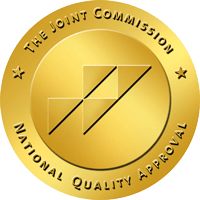One of the most controversial approaches to the drug crisis is harm reduction therapy. To some, it’s enablement. For others, it’s a potential gateway into rehab. Here’s what’s behind the term.
Understanding Harm Reduction Therapy
 In a perfect world, someone struggling with substance abuse will seek help. He’ll recognize that addiction is a treatable disease. Therefore, s/he’ll seek out the assistance of therapists at a rehab facility. In contrast, there’s the reality that this world isn’t perfect.
In a perfect world, someone struggling with substance abuse will seek help. He’ll recognize that addiction is a treatable disease. Therefore, s/he’ll seek out the assistance of therapists at a rehab facility. In contrast, there’s the reality that this world isn’t perfect.
Some people who’re abusing drugs aren’t ready to take the step to heal. For them, a harm reduction approach makes the most sense. It acknowledges that people will use drugs until they’re ready to quit. Most importantly, it embraces a non-judgmental attitude that encourages dignity and assistance.
In the process, someone with a chemical dependency has a way to reach out for help. One example of harm reduction therapy is outpatient methadone treatment for heroin users. Besides that, there’s the easy availability of Narcan, which enables anyone to reverse an opioid overdose. However, no type of harm reduction results in lifelong sobriety.
Seeking Help at a Rehab Facility
Proponents of a harm reduction approach believe that these actions keep doors of communication open. Drug users feel at ease with expressing their needs. Most importantly, contact with treatment centers may result in an exploration of rehab as an alternative. Furthermore, it may enable someone in need of help to reach out without fear of judgment.
The road to recovery starts with a monitored addiction detox program. It eliminates the risk of instant relapse by making the process pain free. Almost everyone’s afraid of the withdrawal symptoms. When therapists succeed in reducing the discomfort, there’s typically a heightened commitment to recovery.
It’s a good idea to select a facility that offers detox and rehab at the same location. Once the individual breaks the physiological dependency, it’s easy to move to treatment. Substance abuse treatment includes:
- Addiction treatment programs that emphasize the need to think through the reasons for drug abuse
- Dual diagnosis treatment that provides for pain, mental health, and addiction care
- Holistic care as a way to incorporate mind and body wellness programs
- LGBTQ affirmative treatment that factors in the unique needs of this demographic
- Marriage and family counseling, which helps loved ones heal and reopens channels of communication
What Happens If Someone Doesn’t Do Anything?
Addiction doesn’t go away by itself. It’s a chronic brain disease with a high relapse potential. Without treatment, there’s a good chance that the individual experiences are deteriorating their health. Most importantly, the quality of life diminishes gradually.
There’ll be a loss of income as well as relationships. Psychological changes most likely lead to self-isolation. Similarly, the person loses hope. The drug no longer results in feelings of euphoria but merely in trying to maintain a new normal.
Harm reduction therapy can be better than nothing. However, real change comes through treatment. Therapists at Pillars Recovery would love to have an opportunity to explain the process. Call 866-796-1574 for a no-strings-attached consultation.






